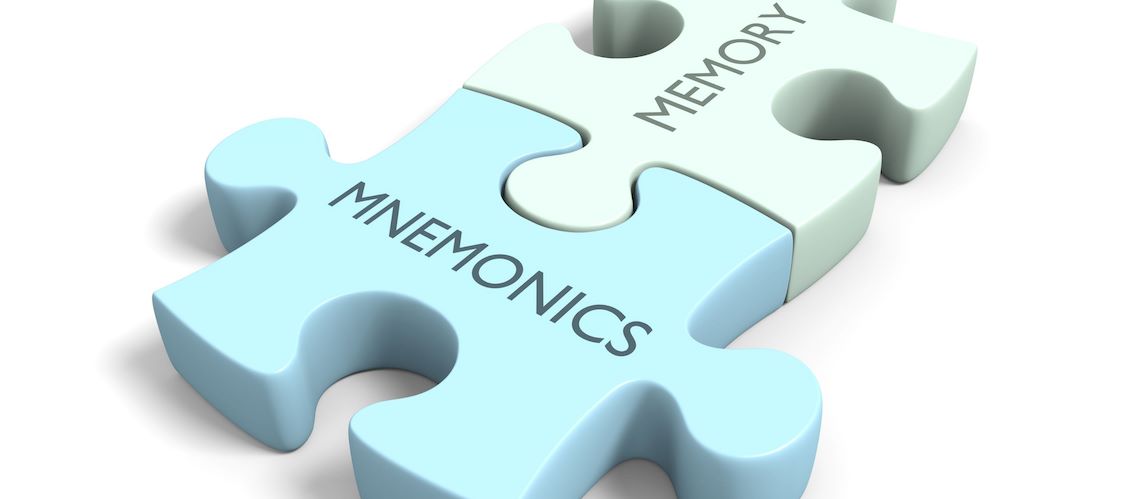Memory is a cornerstone of human potential, influencing how we learn, adapt, and excel. From personal growth to academic success and professional excellence, memory improvement techniques empower individuals to unlock cognitive abilities. By understanding the science behind memory and applying proven methods, anyone can enhance their ability to retain and recall information effectively. This article provides an in-depth exploration of memory improvement techniques, their practical applications, and how they align with the principles of the Self Matrix.
What Is Memory Improvement?
Memory improvement refers to the deliberate use of techniques and strategies that optimize the brain’s natural processes for encoding, storing, and retrieving information. These methods include mnemonic devices, visualization, spaced repetition, and lifestyle habits that support brain health. The goal is not just better recall but a deeper engagement with knowledge, enabling individuals to learn faster, think more clearly, and adapt to complex challenges (Higbee, 2001).
Modern neuroscience confirms that memory is not a static capacity but a dynamic skill that can be cultivated. Techniques rooted in ancient traditions have now been validated by cutting-edge research, offering accessible tools for anyone seeking cognitive enhancement.
A Brief History of Memory Training
Memory training is as old as human civilization. Ancient Greek philosophers, such as Simonides of Ceos, developed the method of loci, or memory palace technique, to memorize vast amounts of information by associating it with imagined spatial locations (Foer, 2012). This method became a cornerstone of classical education and remains one of the most effective memory techniques today.
The scientific study of memory gained momentum in the late 19th century with Hermann Ebbinghaus, who introduced the concepts of the forgetting curve and spaced repetition. These early discoveries paved the way for modern memory research, which emphasizes the interplay between neural processes, cognitive strategies, and external aids.
Books like Higbee’s Your Memory (2001) and Lorayne & Lucas’s The Memory Book (2012) popularized practical methods for memory improvement, while works like Foer’s Moonwalking with Einstein (2012) reintroduced ancient techniques to a contemporary audience. Today, memory enhancement is supported by apps, tools, and an ever-growing body of scientific evidence.
Core Principles of Memory Enhancement
1. Mnemonic Devices
Mnemonics transform abstract or complex information into memorable formats. Techniques like acronyms, rhymes, and associations simplify learning by leveraging the brain’s natural preference for patterns and connections (Pressley et al., 1987). For instance:
- Acronyms like “HOMES” (Huron, Ontario, Michigan, Erie, Superior) help recall the Great Lakes.
- Rhyming mnemonics such as “In 1492, Columbus sailed the ocean blue” encode historical dates effortlessly.
By engaging with information actively, mnemonics stimulate deeper encoding and facilitate long-term retention.
2. Visualization
Visualization creates vivid mental images that make information more memorable. This technique connects the brain’s verbal and spatial processing centers, strengthening the neural pathways that underlie recall (Lorayne and Lucas, 2012). For example:
- To memorize a shopping list, imagine a giant loaf of bread dancing in your kitchen or a gallon of milk spilling over your front door. Visualization not only aids memory but also enhances creativity, making it a versatile tool for learning and problem-solving.
3. Spaced Repetition
Spaced repetition involves revisiting information at progressively longer intervals to reinforce memory and prevent forgetting (Cepeda et al., 2006). This method capitalizes on the brain’s natural tendency to strengthen neural connections through repeated exposure over time. It is particularly effective for language learning, exam preparation, and skill acquisition. Apps like Anki and Quizlet use algorithms to schedule reviews optimally, ensuring efficient and personalized learning.
4. Memory Palace
The memory palace technique, rooted in ancient traditions, involves associating information with specific locations in an imagined space (Foer, 2012). By mentally “walking” through the palace, individuals can retrieve vast amounts of information with precision. This technique is widely used by memory champions and is particularly useful for sequential data, like lists or speeches.
5. Cognitive Load Management
Cognitive load theory emphasizes the importance of structuring information to avoid overwhelming the brain (Chandler and Sweller, 1991). Simplifying content into manageable chunks or using visual aids reduces mental strain, enabling better comprehension and retention. For example:
- Breaking a complex topic into smaller sections allows learners to process and recall information more effectively.
Why Memory Training Matters
Memory training is not merely about storing information—it’s about transforming how we think, solve problems, and achieve our goals.
1. Enhanced Learning
Techniques like spaced repetition and mnemonics enable learners to absorb and retain knowledge more effectively, ensuring that it remains accessible when needed (Cepeda et al., 2006; Pressley et al., 1987).
2. Improved Cognitive Function
Memory exercises strengthen neural networks, enhancing not just recall but also problem-solving, creativity, and critical thinking (Higbee, 2001).
3. Greater Productivity
Professionals who apply memory techniques report improved efficiency in managing tasks, recalling details, and reducing mental fatigue. These benefits translate into better performance and increased confidence (Horsley, 2013).
4. Lifelong Learning
Memory improvement supports personal growth by enabling individuals to master new skills, maintain mental agility, and adapt to changing environments (Kwik, 2020).
Applications of Memory Techniques
For Students
Students can use spaced repetition and mnemonic devices to improve study habits, prepare for exams, and reduce test anxiety. Visualization makes abstract concepts more tangible, while retrieval practice strengthens understanding.
For Professionals
Memory techniques empower professionals to manage complex information, recall key details during presentations, and streamline workflows. The memory palace is especially effective for structured tasks like speech delivery or client management (Foer, 2012).
For Personal Growth
From mastering hobbies to learning new languages, memory improvement enables individuals to pursue lifelong learning and self-improvement with greater focus and efficiency.
Scientific Evidence Behind Memory Techniques
Scientific research underscores the efficacy of memory improvement strategies:
- Spaced Repetition: Demonstrated to significantly enhance retention through optimized review intervals (Cepeda et al., 2006).
- Testing Effect: Retrieval practice not only strengthens recall but also deepens comprehension (Roediger and Karpicke, 2006).
- Memory Consolidation: Sleep and emotional engagement are critical for strengthening long-term memory (McGaugh, 2000).
Getting Started with Memory Training
- Choose Techniques: Experiment with mnemonics, visualization, or spaced repetition to find what works best.
- Be Consistent: Dedicate time each day to memory exercises, such as testing yourself or using a memory palace.
- Track Progress: Use journals or apps to monitor improvement and refine your approach.
- Support Brain Health: Optimize memory with a balanced diet, regular exercise, and sufficient sleep (Kwik, 2020).
Success Stories
Students who practice retrieval and visualization techniques often experience dramatic improvements in grades and confidence (Pressley et al., 1987; Roediger and Karpicke, 2006). Professionals applying memory strategies report reduced stress and heightened productivity, proving that these tools are both practical and transformative (Horsley, 2013).
Conclusion
Memory improvement is a skill that anyone can develop with the right tools and mindset. By integrating scientifically validated techniques into daily routines, you can unlock your brain’s potential, achieve excellence, and grow in both personal and professional dimensions. Start your journey today—your future self will thank you.
References:
Cepeda, N. J. et al. (2006) Distributed practice in verbal recall tasks: A review and quantitative synthesis. Psychological Bulletin, 132(3), pp. 354–380.
Chandler, P. & Sweller, J. (1991) Cognitive Load Theory and the Format of Instruction. Cognition and Instruction, 8(4), pp. 293–332.
Foer, J. (2012) Moonwalking with Einstein: The Art and Science of Remembering Everything. Penguin Publishing Group.
Higbee, K. L. (2001) Your memory: how it works and how to improve it. New York: Marlowe & Co.
Horsley, K. (2013) Unlimited Memory: How to Use Advanced Learning Strategies to Learn Faster, Remember More and Be More Productive.
Kwik, J. (2020) Limitless: Upgrade Your Brain, Learn Anything Faster, and Unlock Your Exceptional Life. Hay House.
Lorayne, H. & Lucas, J. (2012) The Memory Book: The Classic Guide to Improving Your Memory at Work, at School, and at Play. Random House Publishing Group.
McGaugh, J. L. (2000) Memory—a century of consolidation. Science, 287(5451), pp. 248–251.
O’Brien, D. (2020) Quantum Memory Power: Learn to Improve Your Memory with the World Memory Champion!. Gildan Media LLC aka G&D Media.
Pressley, M. et al. (1987) The Development of Good Strategy Use: Imagery and Related Mnemonic Strategies. In: Mark A. McDaniel & Michael Pressley (eds.) Imagery and Related Mnemonic Processes: Theories, Individual Differences, and Applications. New York, NY: Springer, pp. 274–297.
Roediger, H. L. & Karpicke, J. D. (2006) The Power of Testing Memory: Basic Research and Implications for Educational Practice. Perspectives on Psychological Science, 1(3), pp. 181–210.




